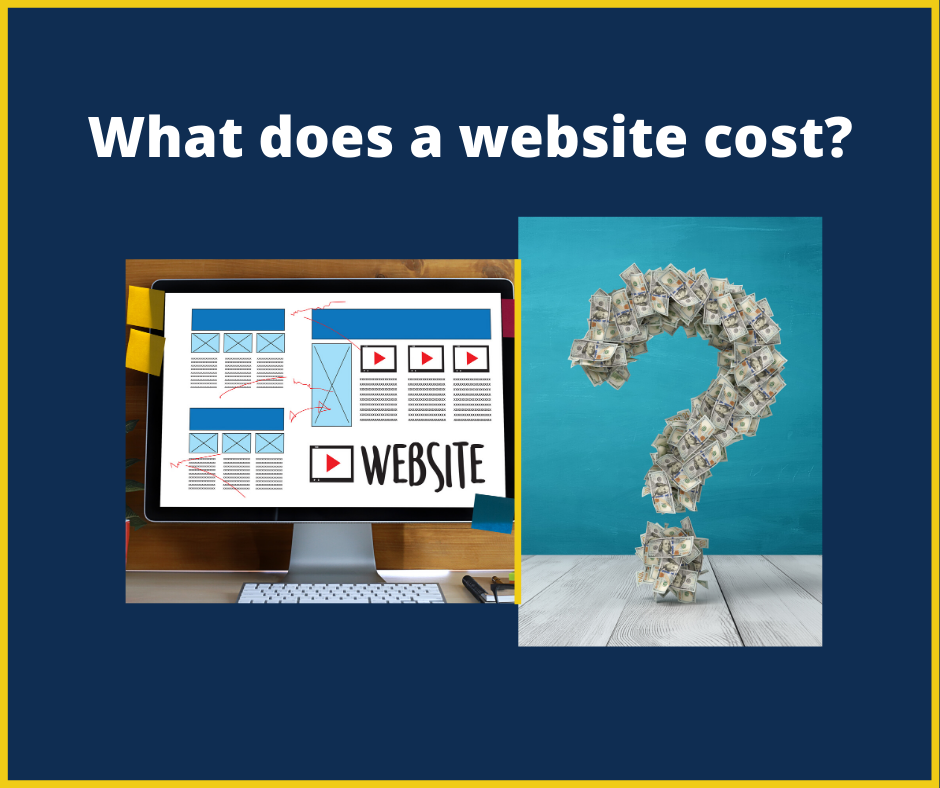 Websites are critical to an organization’s reputation and image. For some clients, a sound marketing communications strategy is designed to lead customers to a website to learn, engage and buy. We often get the question: What does a website cost?
Websites are critical to an organization’s reputation and image. For some clients, a sound marketing communications strategy is designed to lead customers to a website to learn, engage and buy. We often get the question: What does a website cost?
Company leaders often don’t know what they’re paying for in budgets. That’s a risk. Without sound understanding, there’s a chance of confusion, frustration and risk website budgets could be cut.
If you considering website cost, here’s a short list. Website budgets should include:
Build cost: Website builds for a simple site start at $5,000 and can go up to $30,000 plus depending on size and scope. This cost includes outlining the website framework, writing, photography or photos, programming, testing and going live. Timeframe from start to completion depends on the complexity of the website. Consider are you building custom, going with WordPress or DIYing using Wix?
URL cost: There is a payment due to own a website address. Addresses can be purchased through one of many companies including GoDaddy, BlueHost, WPE Engine and the list continues. A developer might offer to host your site on their server, which is sometimes a good idea. Read on.
Hosting fee: Once a URL is purchased, these companies offer a hosting service. Each company has service offerings based on need: space, number of emails, etc. Where to host and package type to buy depends what the type of company/business and overall website structure. Cheapest isn’t always best.
For example, we have a client company that operates a global service-related business. The business does not sell anything on its website (no credit cards or personal data is ever collected), but due to the global work, the site was hacked. To keep the company site secure, it was moved to a private server, which fixed the hacking issue.
Maintenance: Ongoing updates, additions and maintenance for a website cost money. Whether its programming related or adding a new page for a service line, consider who will do the work. Maintenance should also include updated photography. Will you have a photographer come to your business every year or two to refresh photos or will you buy photos through an online stock photo company?
Consideration for change: Technology is rapidly changing and that includes websites. A good website has a life span of three to five years if a company wants to continue to look modern and current. Something to keep this in mind during annual budgeting.
If you’re thinking about building or rebuilding a website, contact us now. We’re happy to listen and help guide you through the process.

 I was thinking about writing this blog and then (moments ago) I received an email from a client with the subject line, “Phones are going NUTS!!!!!” (yes, caps and five exclamation points). So I thought, well now is the time to write this and share it.
I was thinking about writing this blog and then (moments ago) I received an email from a client with the subject line, “Phones are going NUTS!!!!!” (yes, caps and five exclamation points). So I thought, well now is the time to write this and share it. Media pitch: Public relations teams are not literally pitching something at a reporter. We’re offering (or pitching) ideas based on editorial calendars and reporter beats.
Media pitch: Public relations teams are not literally pitching something at a reporter. We’re offering (or pitching) ideas based on editorial calendars and reporter beats. Public relations and communications plans take focus and consistency. Many business leaders work in companies with in-house marketing/communications professionals or own companies with outsourced marketing communications teams in place. Each month, these leaders review spreadsheets, P&Ls, balance sheets and other reports to be sure the business is financially healthy. Do those reports include marketing/communications dashboards? After all, isn’t it the marketing/communications that’s driving branding, new business, consumer purchases–your cash flow?
Public relations and communications plans take focus and consistency. Many business leaders work in companies with in-house marketing/communications professionals or own companies with outsourced marketing communications teams in place. Each month, these leaders review spreadsheets, P&Ls, balance sheets and other reports to be sure the business is financially healthy. Do those reports include marketing/communications dashboards? After all, isn’t it the marketing/communications that’s driving branding, new business, consumer purchases–your cash flow?